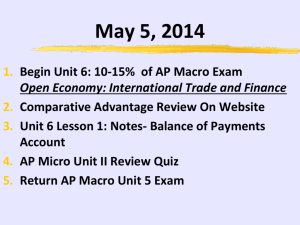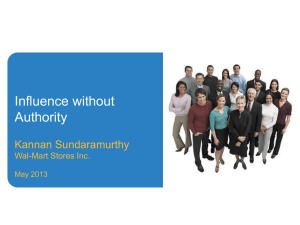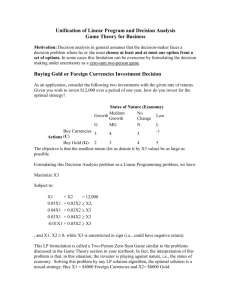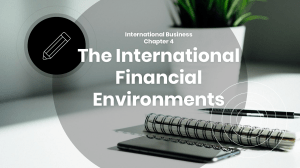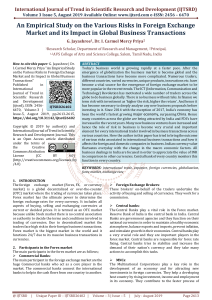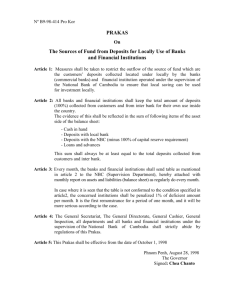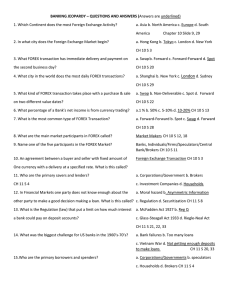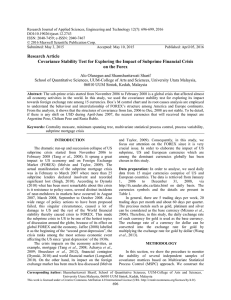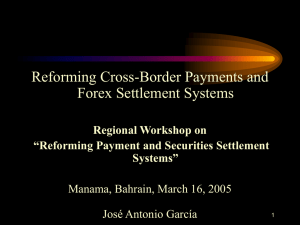PPt
advertisement
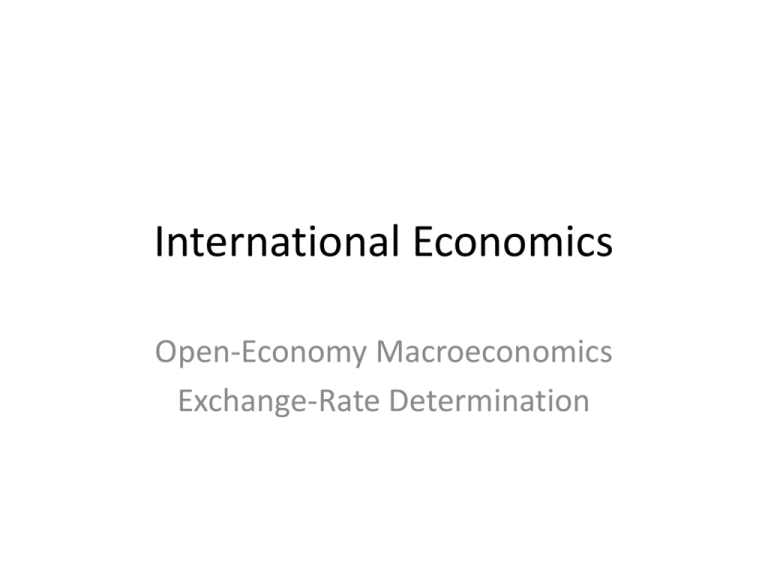
International Economics Open-Economy Macroeconomics Exchange-Rate Determination Bretton Woods Regime vs. Floating Exchange Rates • August 15, 1971 US-UK Exchange Rates EXRUK 4.5 4.0 3.5 3.0 2.5 2.0 1.5 1.0 50 55 60 65 70 75 80 85 90 95 00 05 10 The China Allegation (cont’d) • http://blogs.wsj.com/chinarealtime/2014/05/02/maybe-chinas-currency-isnt-undervalued-after-all/ • http://qz.com/412082/chinas-yuan-is-no-longer-undervalued-says-imf/ • http://blogs.wsj.com/chinarealtime/2014/05/13/undervalueovervalue-the-great-yuan-debate-continues/ Balance of Payments Accounts • The balance of payments accounts are separated into 3 broad accounts: – current account: accounts for flows of goods and services (imports and exports). – financial account: accounts for flows of financial assets (financial capital). – capital account: flows of special categories of assets (capital): typically nonmarket, non-produced, or intangible assets like debt forgiveness, copyrights and trademarks. BoP • The negative value of the net change in official reserve assets is called the official settlements balance or “balance of payments.” – It is the sum of the current account, the capital account, the nonreserve portion of the financial account, and the statistical discrepancy. – A negative official settlements balance may indicate that a country • is depleting its official international reserve assets, or • may be incurring large debts to foreign central banks so that the domestic central bank can spend a lot to protect against financial instability. ForEx Markets (1) • The set of markets where foreign currencies and other assets are exchanged for domestic ones – Institutions buy and sell deposits of currencies or other assets for investment purposes. • The daily volume of foreign exchange transactions was $3.7 trillion in April 2015 – up from $500 billion in 1989. • Most transactions (87% in April 2013) exchange foreign currencies for U.S. dollars. • http://fxandmm.thomsonreuters.com/market-tools/market-volumes/ • http://www.google.com/url?sa=t&rct=j&q=&esrc=s&source=web&cd=1&cad=rja&uact=8&ved=0CC0QFjAA&url=http%3A%2F%2Fwww .bis.org%2Fpubl%2Frpfx13fx.pdf&ei=Ki9nVcrXHuSOsQTx8YKYBA&usg=AFQjCNFM2Zztx3r5J1yS05M1SaKq7RwhA&bvm=bv.93990622,d.cWc ForEx Markets (2) The participants: 1. Commercial banks and other depository institutions: transactions involve buying/selling of deposits in different currencies for investment purposes. 2. Non-bank financial institutions (mutual funds, hedge funds, securities firms, insurance companies, pension funds) may buy/sell foreign assets for investment. 3. Non-financial businesses conduct foreign currency transactions to buy/sell goods, services and assets. 4. Central banks: conduct official international reserves transactions. ForEx Markets (3) • Buying and selling in the foreign exchange market are dominated by commercial and investment banks. – Inter-bank transactions of deposits in foreign currencies occur in amounts $1 million or more per transaction. – Central banks sometimes intervene, but the direct effects of their transactions are small and transitory in many countries. ForEx Markets (4) • Computer and telecommunications technology transmit information rapidly and have integrated markets. • The integration of financial markets implies that there can be no significant differences in exchange rates across locations. – Arbitrage: buy at low price and sell at higher price for a profit. – If the euro were to sell for $1.1 in New York and $1.2 in London, could buy euros in New York (where cheaper) and sell them in London at a profit. The Big Mac Index • As of June 3, 2014: 1 USD = 6.17 CNY [Chinese Yuan Renminbi] • http://www.economist.com/content/big-mac-index ECB’s Policy Stance • http://blogs.wsj.com/briefly/2014/06/04/the-ecbs-negative-deposit-rate-the-short-answer/ • http://www.bloomberg.com/news/2014-06-05/draghi-unveils-historic-measures-on-deflation-threat.html
